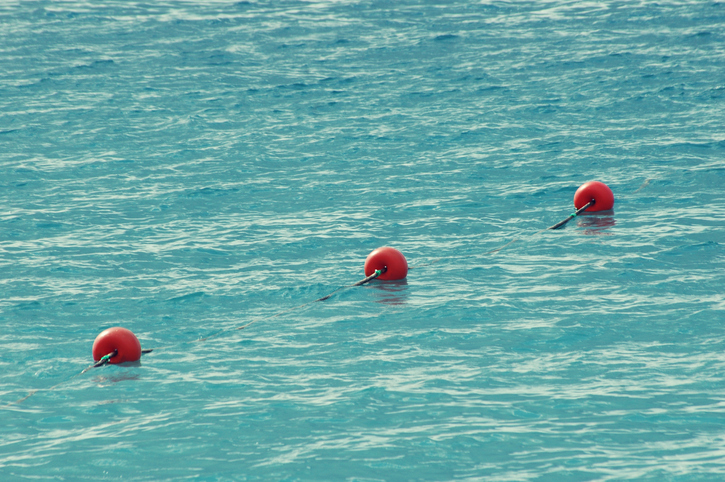When you drive your car down the road, you probably don’t think twice about when to speed up, slow down, use your turn signal, or stop at a stoplight. Understanding water markers when boating is no different: though there are not as many rules of the road to memorize and follow, there are several markers, which are often coded with colors and numbers, that are essential to memorize for a fun and safe boating trip. Below are the most common.
Types of Water Markers
1. Buoys
Buoys are the most common markers, and they’re probably the ones that immediately come to mind when you think of floating water markers. Buoys come in different shapes and sizes, but what’s common to all of them is that the top part, or the part you see, floats, and the bottom part is anchored underwater.
”Nuns” are buoys with cylindrical bottoms and a cone-shaped top, and “cans” are buoys with cylindrical bottoms and flat tops.
2. Beacons
Unlike buoys, beacons are permanently stationed in the water and do not have a floating component. A beacon that features a light can be used to guide you in overcast or foggy conditions, and a beacon with no light is appropriately called a “daybeacon”.
3. Dayboards
A dayboard is usually a diamond-shaped marker that aids you in determining your location on a nautical map. Simply note the color and number on the day board and find where it corresponds to the same marking on your map.
Colors and Numbers To Remember
Just when you think you’ve got your water markers memorized, you’re thrown a curveball: colors and numbers! Similar to traffic signals and color-coded road signs, water markers’ colors convey to the boater important information about direction. “Red, right, returning” is a phrase often used by boaters to help them remember that red colors and lights should be kept to your right when going toward land, and green colors and lights should be kept to your left when heading seaward.
Numbers are used as additional guides. Red colors should accompany even numbers, and green should correspond to odd. For example, if you were heading out to sea, you may want to look out for increasing numbers on red water markers as you navigate.
About Mariners
Mariners General Insurance Group was founded in 1959 to protect boat owners and marine business clients. We are marine insurance experts and insure boats worldwide – in every ocean on the planet. Marine insurance is critical if you own a boat or nautical business. Trust the professionals with all of your boat insurance needs – trust Mariners Insurance. Call us at (888) 402-5018 any time you have questions or concerns about insurance for your vessel or marine business.



